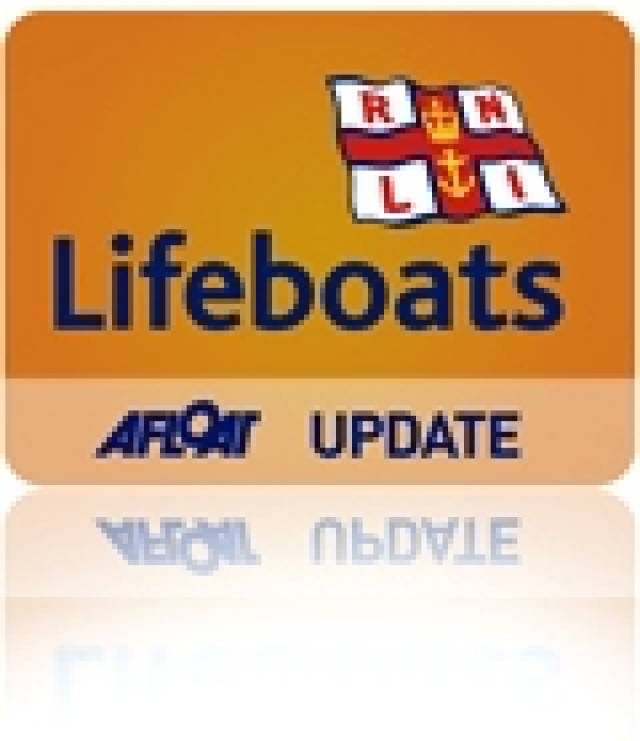#rnli – Volunteer lifeboat crew with Lough Derg RNLI pulled a man from the Nenagh river this afternoon after they had received reports that he had fallen from his kayak and was being pushed down the fast flowing river. Members of the emergency services including the Gardai and local fire crew had tried unsuccessfully to recover the man from the side of the river and called on the RNLI lifeboat crew from Lough Derg to launch and help rescue him.
The lifeboat had to navigate the difficult waters of the Nenagh river which were strewn with debris following the recent bad weather. The kayaker was observed to be semi-conscious and was turning in the water when the lifeboat crew arrived on scene.
The RNLI volunteers spotted the man just past the Annabeg bridge. Two of the three lifeboat crew recovered the casualty over the side of the inshore lifeboat and he was immediately brought back to the station at Dromineer.
The lifeboat crew administered first aid en route. They were met by a waiting ambulance and the Coast Guard helicopter from Shannon. The paramedic gave the casualty first aid and a decision was made to transfer him by helicopter to hospital for treatment.
Commenting on the callout Lough Derg RNLI lifeboat helm Eleanor Hooker said, "This was an extremely serious situation and one where every second counted. If he had not been spotted and help had not reached him when it did he was in serious danger of being pulled under by the current. All the emergency services worked together to try and recover him as the speed with which he was being dragged down the river was increasing rapidly.
Our thoughts are with him and we hope he makes a full recovery after his ordeal.'































































